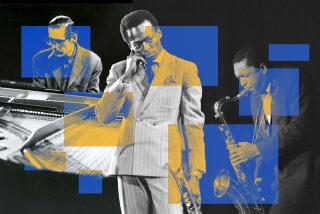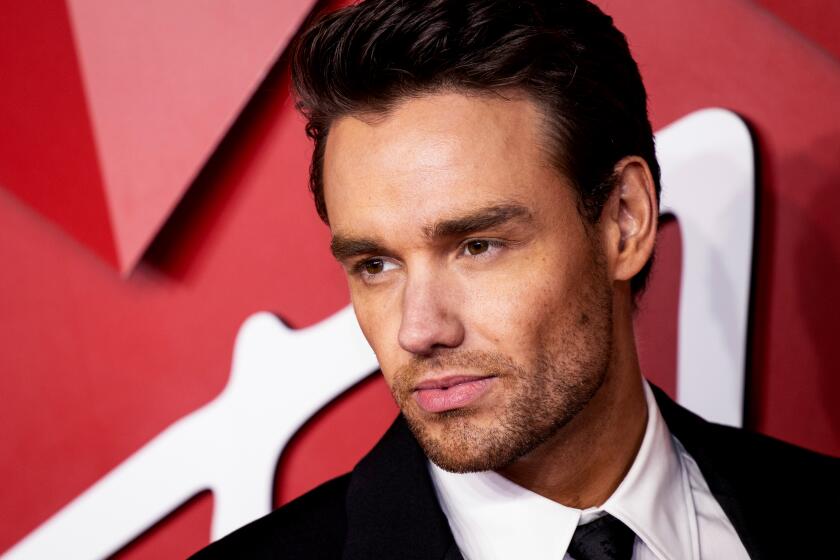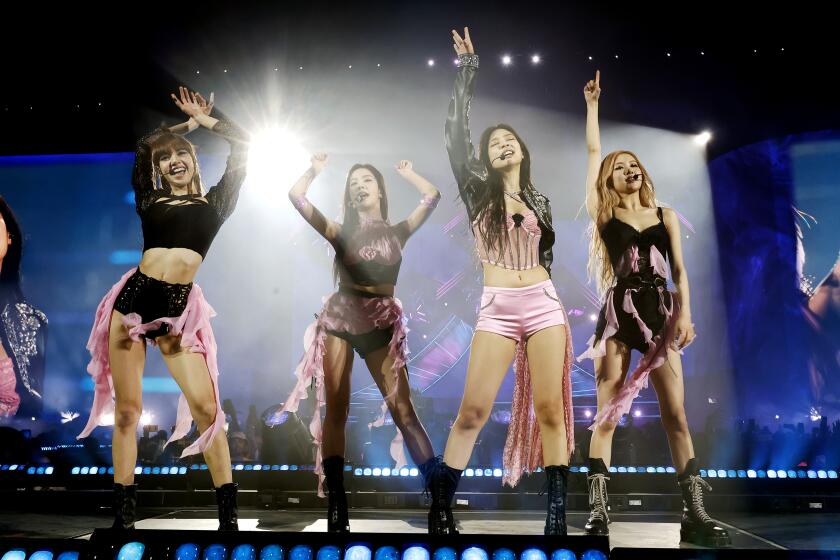JAZZ REVIEW : Boys’ Weekend Out in Denver
- Share via
DENVER — Labor Day weekend traditionally has been the time when the jazz epicenter of the universe can be found in Colorado. From noon Saturday until late Monday, more than 50 jazz artists, most of them world class, and more than 500 fans were ensconced in the Hyatt Regency, where Dick Gibson presented his 29th annual jazz party.
Though formality may reign in the ballroom where the 32 hours of jamming takes place (Sunday evening is always black tie), the ambience on the bandstand is totally loose. Every 45 minutes an ad-hoc group, handpicked from the 56-man pool, digs for tunes that strike a common chord, and the A Train starts rolling or a blues begins cooking.
Does familiarity breed contempt or contentment?
For most listeners, clearly the latter. Many of these patrons have made this an annual pilgrimage, as have the musicians; only five of the 56 had never played the party before. Pianist Ralph Sutton performed at the first party in Aspen in 1963 and has missed only one; for bassist Milt Hinton this was No. 27.
For this critic, who has attended all but the first eight events, there was a sense of deja vu (and deja entendu ). When performers fail to exercise imagination, the tried and true can become trite and trying. However, Gibson’s games of musical chairs involved such successful ploys as putting seven saxophonists on the bandstand at once, or six trombonists, to do battle on some old be-bop standard by Monk or Gillespie.
Piano duets are invariably a highlight: Roger Kellaway and Roland Hanna had never played together before, yet the head of steam they worked up on Miles Davis’ “All Blues” gave dazzling new meaning to the term “jazz waltz.” Gerald Wiggins, a first-timer here, dueled with Sutton on an antique ditty called “Nagasaki.”
Two other newcomers, 36-year-old Rickey Woodard from Los Angeles on tenor sax and Jesse Davis from New York on alto, exemplified a youthful, invigorating spirit. At 25, Davis was the only participant under 35.
Peter Appleyard, the vibraphonist from Toronto, joined with Kellaway for a lyrical treatment of John Lewis’ “Django” that projected more warmth than Lewis’ own version with the Modern Jazz Quartet.
Agreeable surprises were furnished by pianist Eddie Higgins in a charming Brazilian tune, “Carinhoso,” and by Jerome Richardson on alto sax in “Where Is Love?,” a song from “Oliver.”
Even some of the time-worn songs came alive, as when violinist John Frigo sublimated “Summertime,” Benny Carter (still a giant at 84) enlivened “Misty,” and Ray Brown’s bass walked its way through “Strike Up the Band.”
For Gibson’s 30th anniversary celebration next year, certain changes could stir up needed new interest and reverse the red ink trend of recent years. The problems are due to the mortality rate among customers (and musicians); the inroads made by scores of other jazz parties spawned by his initiative; the near-total neglect of female musicians, and of the countless younger artists in Los Angeles and New York who have escaped Gibson’s attention.
More to Read
The biggest entertainment stories
Get our big stories about Hollywood, film, television, music, arts, culture and more right in your inbox as soon as they publish.
You may occasionally receive promotional content from the Los Angeles Times.








